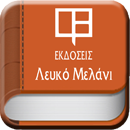Περιγραφή
Introduction
Molding (or negative) is to construct from a liquid material which, when solidified, reflects the shape of a solid body, what we call a model.
From this process, what we call a matrix, formula, mold, or negative emerges.
A copy can also be made by casting a fluid which solidifies in the mold. The reproduction is called a cast, copy, or positive.
Thus, while the mold is the negative representation of the original, the cast is its exact copy. Over time, the term cast came to be used for the reproduction of the pattern, while the terms matrix, type or mold remained in use for the impression.
The pattern or model can be, for sculptors, any object: a clay model, plaster model, artwork (marble, bronze, ceramic), living model, etc.
The mold is necessary for casting and can be made of polyester, epoxy resin, liquid clay, liquid cement, wax, etc.
It is also necessary for “pressing” the impression, i.e., with cement or clay for ceramic applications.
The cast can range from a simple plaster replica to a complex brass-bronze sculpture.
Uses of the cast are wide-ranging, both in con-structing molds to faithfully reproduce casts for education and the study of art history and in pre-serving priceless works of art from damage caused by direct exposure to the outdoors
The creation and use of the matrix is inextricably linked first to metallurgy and later to ceramics.
This is why this work includes particularly extensive references to the history of copper, the properties of metals, and the processes of repro-duction through the casting of brass and bronze sculptures.
For the same reasons, I refer to ceramics. On the contrary, I refer to modern materials (silicones, resins, cements, etc.) mainly to demonstrate the even greater necessity of knowledge of casting when using these materials.










Αξιολογήσεις
Δεν υπάρχει καμία αξιολόγηση ακόμη.